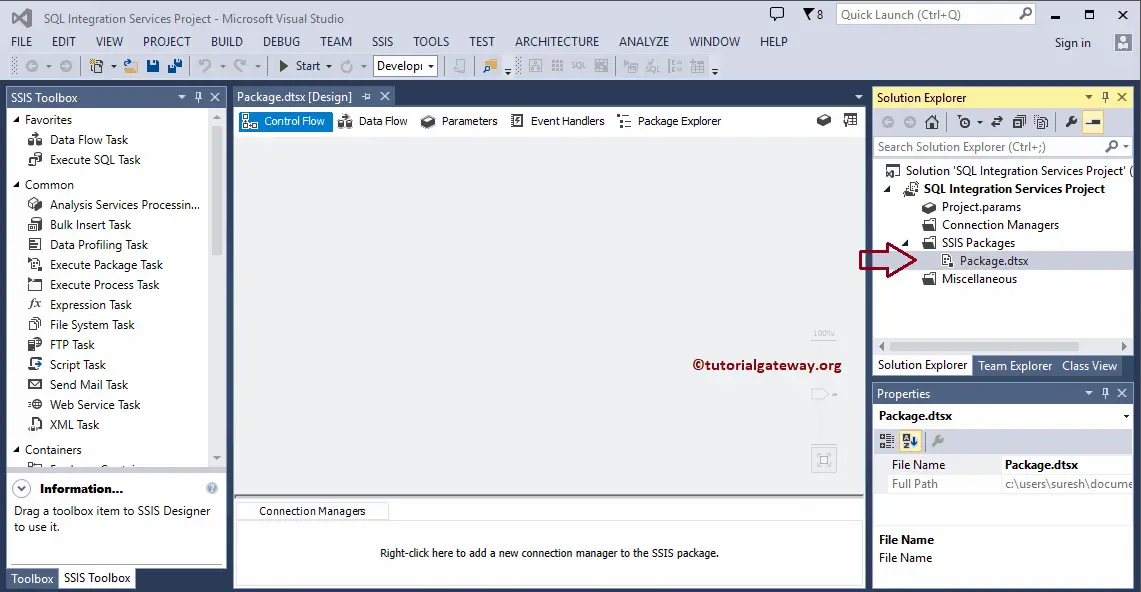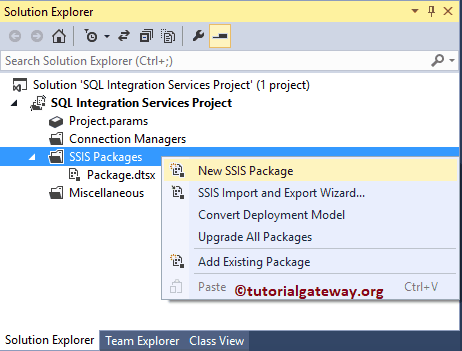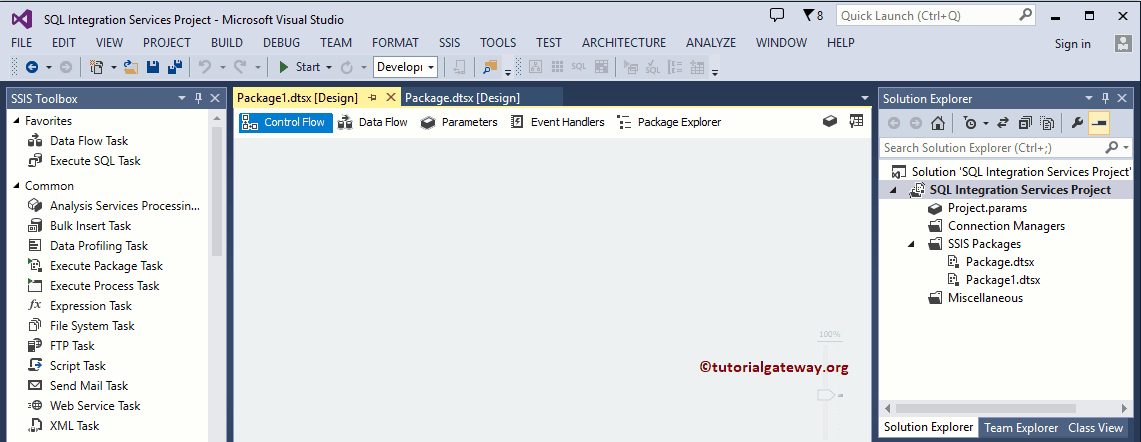A package in SSIS is a collection of Tasks that may include Data Sources, Transformations, and Destinations that work together in a given order. Internally, SQL Sever integration services Package is a combination of Connection Managers, Control Flow Tasks, Data Flow Elements, Parameters, and Event Handlers used to perform ETL operations.
Each project contains multiple packages, and each package has the dtsx extension. The SSIS package is an independent workflow with its business logic or tasks. However, you can execute one package from another.
How to Create a SSIS Package?
When you create a New Project, BIDS automatically creates a new one. However, you have a choice to create a new package in SSIS.
The Package is all about extracting data from various sources, transforming it, and loading it totally different destinations. The following screenshot shows the package environment.

To do so, right-click on the Packages folder, and select the New option from the context menu.

It will create a new package, as shown in the below screenshot

